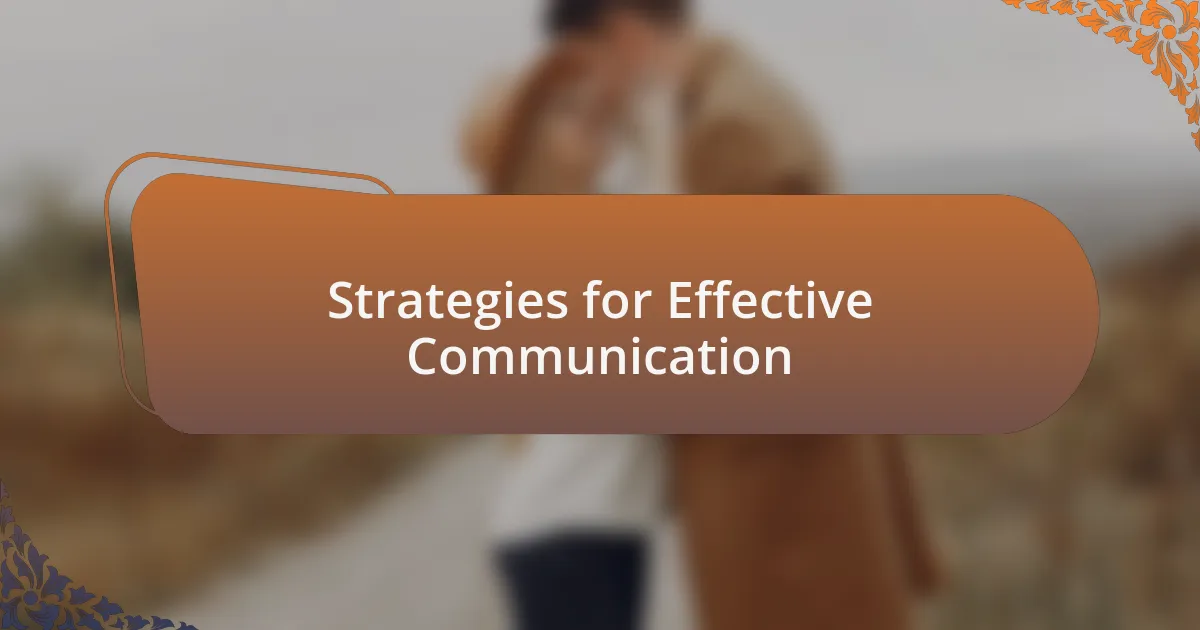Key takeaways:
- Selective mutism is a complex anxiety disorder, not merely shyness, requiring empathy and supportive environments for effective communication.
- Creating comfortable spaces with familiar surroundings, calming sensory elements, and supportive relationships can facilitate expression for those with selective mutism.
- Positive reinforcement and active listening significantly enhance comfort levels and encourage individuals to share their thoughts and feelings.

Understanding Selective Mutism Awareness
Selective mutism is often misunderstood, leading to misconceptions about those who experience it. It’s not simply about being shy or uncommunicative; rather, it’s a complex anxiety disorder that typically arises in childhood. Reflecting on my own encounters, I’ve seen how quickly assumptions can form, often neglecting the deep emotional struggles individuals face.
I remember a time when a friend’s daughter would only speak at home, leaving her peers puzzled and sometimes disinterested. As a parent, how would it feel to watch your child being labeled as aloof or antisocial? These labels can be painful, reinforcing barriers that already exist for children dealing with selective mutism, further isolating them from social interactions.
Understanding selective mutism requires empathy and patience, particularly recognizing the silent battles these children fight daily. Asking ourselves how we can support them in gradually breaking those silence barriers is crucial. I often wonder: what if we created spaces where communication felt safe and validating? It’s in these supportive environments that true understanding and connection can grow.

Importance of a Comfortable Environment
Creating a comfortable environment is essential for individuals with selective mutism, as it directly influences their ability to communicate. I recall a workshop I attended, where the facilitator emphasized the power of a calm space. In that setting, participants felt relaxed and more willing to share; it was evident that when anxiety is reduced, barriers begin to crumble.
I often find myself reflecting on the significance of familiar surroundings. For instance, when I visited a child’s home for a playdate, it struck me how much more openly she interacted in her own space compared to a public place. This experience highlighted that comfort can come from the surroundings; familiarity breeds safety, allowing for more effortless communication.
Imagine how different it could be if every child had access to a space where they truly felt at ease. What if we designed environments specifically catered to their needs? I believe that fostering such spaces could bridge the gap between silence and expression, creating opportunities for meaningful connections and engagement.

Key Elements of Comfort
When considering key elements of comfort, one crucial factor is the sensory environment. I remember visiting a classroom that incorporated soft lighting and soothing colors; it created an atmosphere that felt tranquil and inviting. Colors like soft blues or greens can truly affect moods, making individuals feel safe rather than overwhelmed.
Another element that stands out to me is the role of personal space. I once observed a child who hesitated to speak up until she was provided with a quiet corner filled with her favorite stuffed animals. This small adjustment allowed her to engage at her own pace, proving that having a designated, comfortable space is vital for facilitating communication.
Lastly, I can’t overlook the power of supportive relationships. In my experience, the presence of understanding adults or peers can significantly heighten a sense of safety. Have you ever noticed how a kind smile or a gentle nod can encourage a shy individual? These gestures can build an invisible support system that enables comfort and promotes a willingness to engage with others.

Creating Safe Spaces
Creating a safe space is all about fostering an environment where individuals feel sheltered from judgment. I remember a moment when a friend of mine set up a cozy reading nook in her living room, complete with plush cushions and soft blankets. It became our sacred place, where we could share our thoughts without fear. Isn’t it fascinating how that physical comfort translated into emotional safety?
I once worked with a child who thrived in a safe space created by a simple curtain that separated her from the chaos of the larger classroom. This small barrier provided a sense of control, allowing her to observe the environment on her own terms. It sparked a realization for me: sometimes, safety isn’t about the absence of noise or distraction; it’s about having a personal refuge.
Beyond the physical elements, I find that openness and clear communication play an essential role in safety. Have you ever discussed the significance of boundaries with a child before exploring their feelings? That proactive approach can demonstrate to them that their comfort matters. In my experience, when individuals feel seen and respected, their willingness to engage grows exponentially. Creating a safe space isn’t merely a task; it’s an ongoing commitment to nurturing trust and understanding.

Using Positive Reinforcement
Using positive reinforcement can significantly enhance the comfort level of someone with selective mutism. I recall a time when I encouraged a child to speak by praising small efforts, like whispering a word or two. The delighted look on their face when I celebrated those moments was priceless—it reinforced their courage and opened up pathways for communication.
In my experience, consistent praise and rewards can create a ripple effect of confidence. For instance, I once implemented a sticker chart for a shy student, where each successful vocalization earned them a sticker. It was wonderful to see how those little rewards turned into motivation for them to express themselves more freely. Doesn’t it make you wonder how such simple gestures can nurture growth?
Every small step matters, especially in creating a supportive atmosphere. I remember asking a teen to share their thoughts in a group setting, affirming that their voice was valuable. Over time, as they received positive feedback, I witnessed a transformation—what started as hesitance blossomed into openness. How powerful it is to remember that recognition can pave the way for connection!

Strategies for Effective Communication
One effective strategy I’ve found is using visual cues to support communication. During a group session, I introduced a feelings chart where participants pointed to faces representing emotions before sharing their thoughts. Witnessing how this activity eased their anxiety was enlightening; it provided a bridge for them to express feelings they otherwise couldn’t articulate. Have you ever seen how images can sometimes convey what words cannot?
Creating a relaxed atmosphere for conversations is crucial. I remember setting up a cozy corner filled with cushions and soft lighting during discussions. This simple change made individuals feel at ease, and I noticed their body language shift—suddenly, they were more open to participating. Wouldn’t you also feel more inclined to speak your mind in a comfortable setting?
Active listening is another vital component. I always make it a point to give full attention to the speaker, nodding and maintaining eye contact to show I value their words. There was a moment with a child when I paused before responding to ensure they felt heard, which prompted them to share more than I expected. It’s fascinating how the act of truly listening can encourage others to open up, don’t you think?

Personal Experience in Creating Comfort
Creating comfort often starts with recognizing what makes individuals feel safe. I recall a time when I hosted a workshop on selective mutism awareness, and I decided to incorporate a calming soundscape of gentle rain and soft music. Almost immediately, the attendees seemed to breathe more easily, their shoulders dropping as they soaked in the atmosphere. Isn’t it remarkable how sound can influence our emotions so profoundly?
I’ve learned that small gestures can create significant comfort. When I noticed a young participant fidgeting with their hands, I offered them a stress ball. Watching them squeeze it while they expressed themselves opened up a new pathway for communication. It’s amazing how providing a simple tool can transform apprehension into openness, don’t you agree?
It’s crucial for me to share my own journey, too. I remember grappling with anxiety in social settings, where just the thought of speaking could be overwhelming. Now, I try to embody the reassurance I yearned for, offering warmth and understanding to those who might be navigating similar struggles. This connection often sparks a sense of camaraderie, making it easier for others to relax and share their experiences. Have you found moments where your past experiences helped someone find their voice?